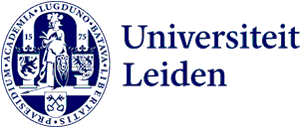Admission requirements
Inleiding Mathematische Statistiek and Inleiding Kansrekening
Description
Once upon a time, statisticians made use of simple models that allowed them to derive most of their properties analytically, and to perform computations by hand or with the help of a pocket calculator. Once upon a time is no more: modern statistical and machine learning methods are usually too complex for analytical derivations, making computational approaches essential for the application of up to date statistical methods to real-world problems.
In the first half of this course, you will be introduced to the fundamentals of modern computational statistics: algorithms for the generation of pseudo-random numbers, the Monte Carlo method and how you can use it to design and analyse simulation studies, and techniques for numeric optimization and integration. We will explore the mathematical and statistical foundations that such methods rely on, show how they can be implemented in R, and provide several examples of problems where these methods can be applied.
The second half of the course will build on the computational statistics methods you've learned, and introduce you to the field of longitudinal data analysis. Longitudinal data arise when data are collected from the same statistical unit at multiple points in time, giving rise to “repeated measurements”. Usually, repeated measurements are positively correlated, making classic statistical methods (such as linear regression) that assume independent observations unsuitable for longitudinal data. The generalized linear mixed model (GLMM) is an extension of linear regression that allows to model correlations across observations, and to handle response variables that are not normally-distributed. After defining the GLMM, we will discuss how computational methods can be used to estimate it and to study its properties. We will show how the GLMM (and the simpler LMM and GLM models) can be estimated using existing R packages, and showcase multiple applications where LMMs and GLMMs make it possible to properly model longitudinal data.
Course Objectives
By the end of the course, students are expected to
1. understand the mathematical and statistical foundations of the methods covered in the course;
2. be able to ascertain whether a given statistical method can be applied to solve a specific problem;
3. implement and apply computational statistics techniques and advanced regression models (LMM, GLM, GLMM) using R;
4. be capable of properly interpreting the results yielded by the application of the methods covered in this course.
Timetable
In MyTimetable, you can find all course and programme schedules, allowing you to create your personal timetable. Activities for which you have enrolled via MyStudyMap will automatically appear in your timetable.
Additionally, you can easily link MyTimetable to a calendar app on your phone, and schedule changes will be automatically updated in your calendar. You can also choose to receive email notifications about schedule changes. You can enable notifications in Settings after logging in.
Questions? Watch the video, read the instructions, or contact the ISSC helpdesk.
Note: Joint Degree students from Leiden/Delft need to combine information from both the Leiden and Delft MyTimetables to see a complete schedule. This video explains how to do it.
Mode of Instruction
A combination of lectures and computer practicals. To fully benefit from the practicals, it is recommended that you bring your own laptop with R and RStudio installed.
Assessment method
A written exam at the end of the course.
Reading list
Rizzo, M. L. (2019). Statistical Computing with R. CRC Press.
McCulloch, C. E., & Searle, S. R. (2008). Generalized, Linear, and Mixed Models. Wiley.
Dobson and Barnett (2018). An introduction to Generalized Linear Models. CRC Press.
Registration
As a student, you are responsible for enrolling on time through MyStudyMap.
In this short video, you can see step-by-step how to enrol for courses in MyStudyMap.
Extensive information about the operation of MyStudyMap can be found here.
There are two enrolment periods per year:
Enrolment for the fall opens in July
Enrolment for the spring opens in December
See this page for more information about deadlines and enrolling for courses and exams.
Note:
It is mandatory to enrol for all activities of a course that you are going to follow.
Your enrolment is only complete when you submit your course planning in the ‘Ready for enrolment’ tab by clicking ‘Send’.
Not being enrolled for an exam/resit means that you are not allowed to participate in the exam/resit.
Contact
Dr. M. Signorelli - glmmleiden [at] gmail [dot] com
Remarks
Software
Starting from the 2024/2025 academic year, the Faculty of Science will use the software distribution platform Academic Software. Through this platform, you can access the software needed for specific courses in your studies. For some software, your laptop must meet certain system requirements, which will be specified with the software. It is important to install the software before the start of the course. More information about the laptop requirements can be found on the student website.
